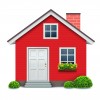Every year more than two million Americans fall down causing serious injury and substantial medical bills. Falls have become one of the elderly’s most serious health issues. When older people fall, they often land on their bottoms or backs, putting lots of pressure on their hips. For most people, there are several ways to prevent falls. Knowing why people fall is the first step.
As the body changes with age, such things as poor vision, loss of muscle strength and joint stiffness make the elderly more likely to fall. Here are some additional details about age related fall risk factors:
• Muscle strength decreases gradually with age. Joint tendons and ligaments lose their flexibility and limit motion.
• Reflexes begin to slow with age, making it hard for people to react quickly.
• Vision diminishes with advancing age, and this directly effects the sensory systems involved with movement.
Many diseases and disorders, such as Parkinson’s Disease and arthritis, put patients at risk for falls. Taking several different medications are also risk factors.
• Arthritis can cause permanent crippling, nonreversible effects that put a person at high risk for a fall.
• Sore feet, from foot disorders such as nail problems, corns, blisters or heel pain, can also cause falls.
• People who take four or more medications are at a high risk for falling, especially if any of their medications have changed in the past two weeks.
Falls can be simple every day causes, such as tripping over something on the floor, stumbling on a loose rug, or falling at night on the way to the bathroom. In fact, there could be many potential safety hazards in everyone’s home:
• Wet walking services
• Loose area rugs or mats
• Electrical cords on the floor
• Stairs without handrails
• Slippery bathtub or shower
Tips for preventing falls:
1. Stay as active as possible.
2. Have your hearing and vision checked every year.
3. Talk with your doctor if you experience dizziness, confusion, or disorientation.
4. Report any change in blood pressure.
5. Tack down any rugs.
6. Mop up any spills on the floor immediately.
7. Make sure your house is well lit.
There is a simple test you can conduct to determine if you are unsteady on your feet:
1. Sit with your back against a chair.
2. Stand up and don’t use the arm rest to stand.
3. Remain standing.
4. If you start to sway, you are probably a fall risk.
5. Walk 10 feet, turn around, walk back and sit down.
6. If you hesitate, stumble, move slowly and need help, you are a fall risk.
For more information about Fall Risks, visit stopfalls.org
